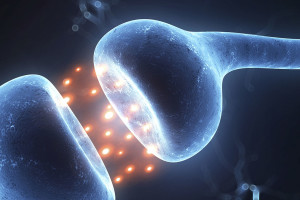When we want to transform our physique, we generally have one of two goals – lose fat or gain muscle – although most of us want both. Even though this is sometimes possible (if you are brand new to training, are on steroids or are returning from a long break from training), it’s generally recommended to focus on one goal at a time to ensure faster and more optimal results. If you don’t yet know what your primary goal should be, I highly recommend you read my article on goal setting first. If you’ve already read it, then the next question is how fast should I cut / bulk?
How Fast Should I Cut / Bulk?: Why is there an “Optimal rate”?
First, you need to understand that when it comes to the time it takes to reach these goals, fat can be lost much quicker than muscle can be gained. If you are cutting, (losing fat) you will experience visual and measurable results much quicker and more obviously compared to someone who is bulking (building muscle).
Why does it take so long to bulk up? Gaining muscle requires the creation of brand new muscle tissue and new connections in the body. This takes a long time and requires patience, lots of patience. It takes much more time to build an awesome mansion home compared to the time it takes to dismantle it.
By burning away fat or building new muscle during a bulk at the optimal rate over time, you will achieve most optimal results with minimal negative side effects or consequences.
The alternative can be bad, really bad.
Some people on a bulk end up taking in a huge excessive energy surplus (stuffing themselves with food every day). This will lead to some good muscle growth yes, but also they’ll gain excessive and unnecessary fat along with it which not only hides their new muscle, but means lots of time is now needed to burn off the fat that came with it.
Those who try and cut down too fast end up destroying their metabolism, thyroid function and hormone balance, all creating an awful environment in the body that inevitably rebounds to put on more fat than you started with. Many also develop eating disorders and can lead to serious health issues. If all that isn’t enough, up to 60% of the weight lost in the process can come from hard earned muscle!
How fast should I cut for fat loss
As a guide, aim to reduce your weight by 0.5 – 1.0% of your weight per week. So if you’re 70kg, reduce your weight by 0.7kg per week. If you’re 230 pounds, reduce your weight by 2 – 2.5 pounds per week. Make sense?
What does this all mean?
For obese individuals, their body has a lot of fat cells filled up with lots of reserve caloric energy. At this stage a more aggressive calorie deficit is acceptable. Your body is content with releasing fat for energy as your body still has plenty of fat left to spare. As this reserve energy tank starts to run dry however, your body begins to get worried and starts to cling onto fat where possible. The trick here is to “politely encourage” your body to release fat little bits at a time by not being too aggressive with your calorie deficit. Also refeed days are a recommended tool to reset your system and allow your body some breathing space.
The leaner you become, the more difficult it is lose fat without losing lean muscle tissue. For physique athletes like bodybuilders or figure competitors coming into the final stretch of the a contest prep, holding on to lean muscle becomes a major concern and high priority, especially if they’re drug-free. The best tactic at this point is to slow things right down and not scare the body into holding onto its remaining fat.
How fast should I bulk for lean muscle gain
Assuming you are training correctly to stimulate maximum muscle growth, the next step is to feed the body with just the right amount of nutrition for new muscle tissue to be synthesised. The rate at which your body can do this depends on your “training age”. This is the time in which you have been seriously and consistently weight training in the gym week after week.
Beginners (0 – 12 months)
At the start of your training, your body is highly receptive to muscle growth if you train and eat correctly. A true beginner with proper workouts and high quality nutrition can expect to gain 2 – 3 pounds per month. Yes, I said per month. Yes, it is much slower compared to fat loss but it’s still hugely significant as an increase of 20 pounds of muscle for a year is dramatically different in the mirror (assuming you are lean enough to see the muscle under the fat).
Intermediate lifters (2 – 5 years)
As you progress with your training, you will become ever closer to your genetic potential. This limit is different for everyone so the best approach is to simply aim to be the best you can be with your own genetics. At this point in your training, aim to increase weight by 1 – 2 pounds per month. This is still a significant increase in muscle size as you will look massively different with an extra 10 pounds of muscle on your frame in a year, believe me.
Advanced lifters (6+ years of serious training)
For those top elite lifters who are at the top of their game in the fitness industry, their body is 95% of the way to the genetic peak. At this stage, 1 – 2 pounds of muscle per year is a very good result. Some will spend 3 to 5 years off competing to gain a couple of pounds of muscle. The good news is a small increase like that once conditioned down to 3 – 5% body fat for a stage show, the difference of 1 – 2 pounds of muscle are clearly apparent.
Summary for a lean bulk
Beginners (0 – 12 months serious training) = 2 – 3 pounds per month*
Intermediate (2 – 5 years serious training) = 1 – 2 pounds per month*
Advanced (6+ serious training) = 1 – 2 pounds per year*
*Half all these values for female lifters due to genetic limitations.
How to transition into a cut or a lean bulk
- Start by consuming the calories you eat normally for maintaining weight
- Ensure you are getting enough protein, complex natural carbs, healthy fats and fibre.
- Increase or decrease your calories by 100 – 200 calories per week until you reach your ideal rate of weight gain for lean muscle growth.
- Track your weight and adjust calories as needed. Consider cycling with higher / lower calorie days if you tend to store fat easily when bulking or lose muscle easily when cutting.
- Continue to maintain a heavy lifting program and adequate cardio each week.






Leave a Reply